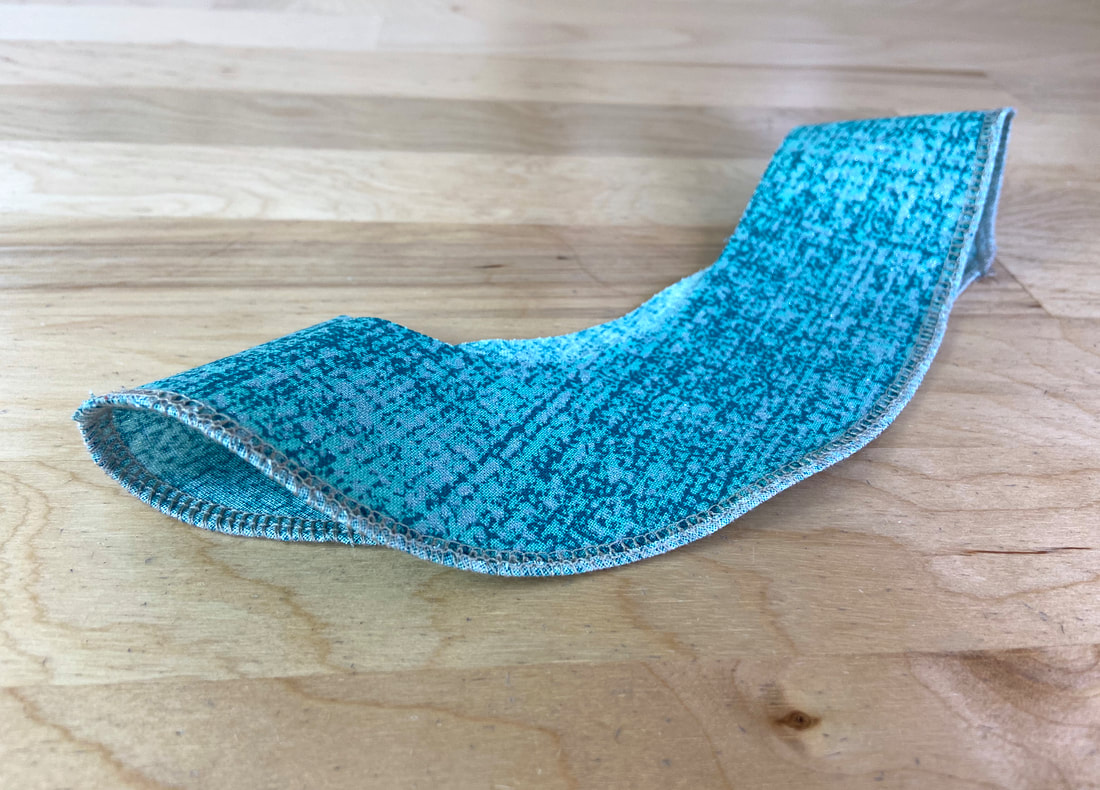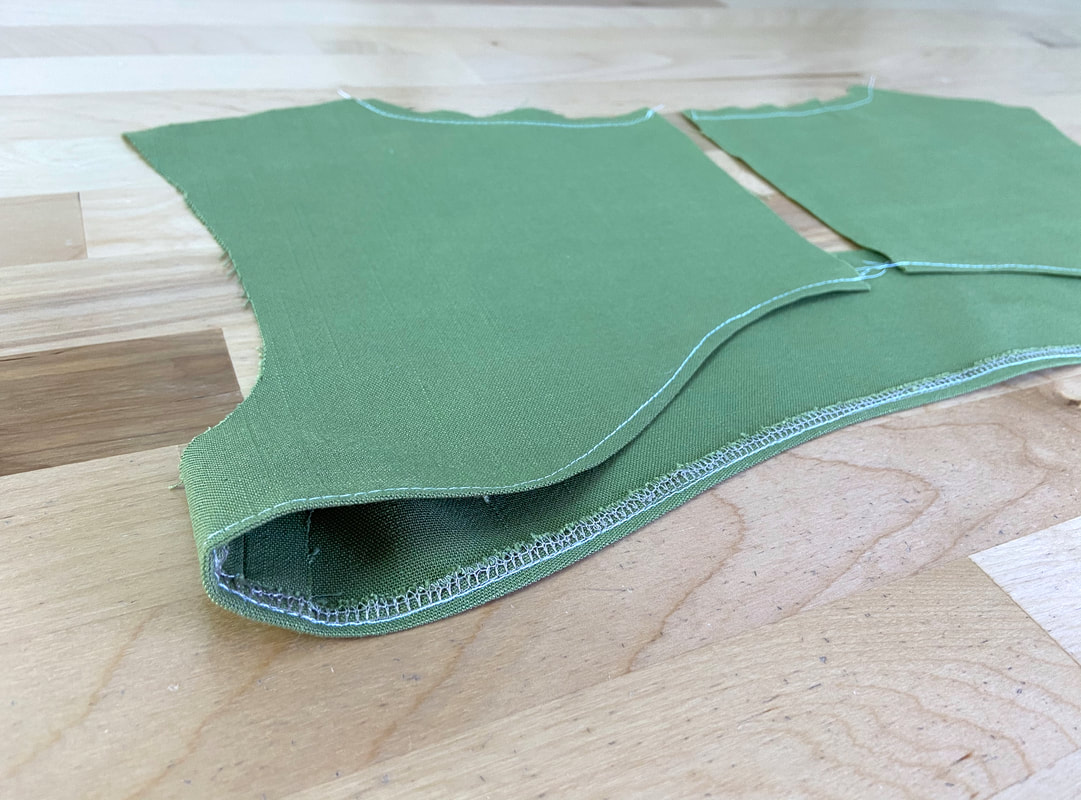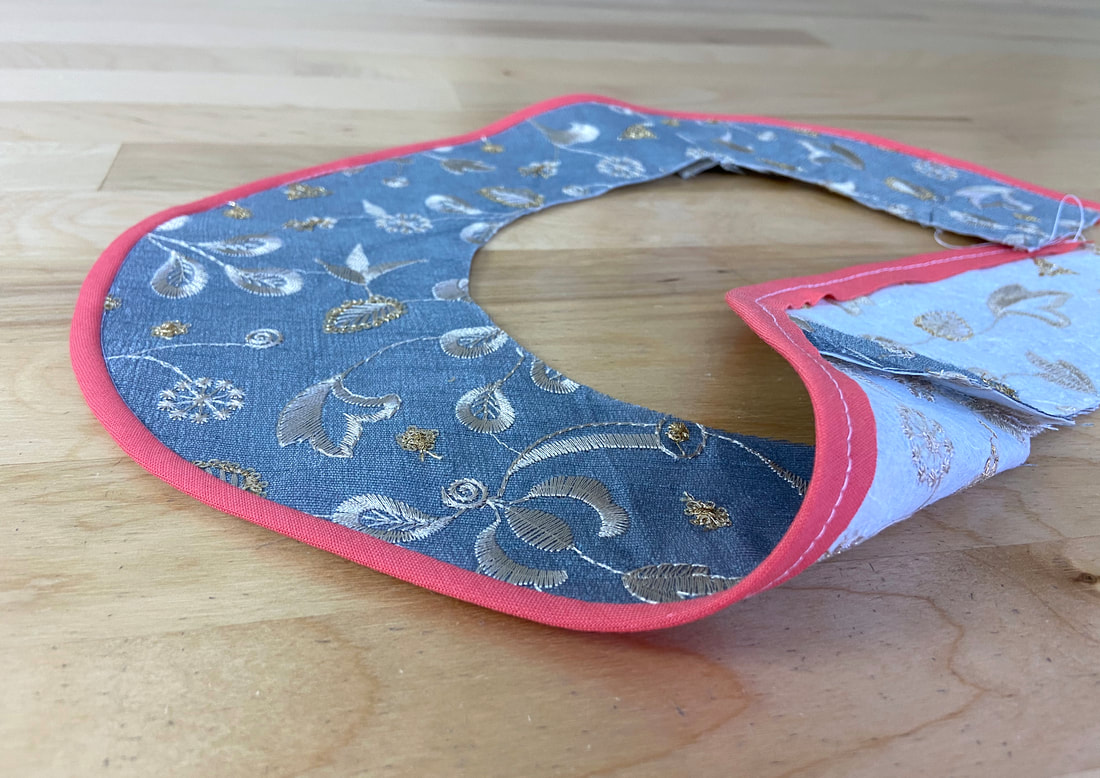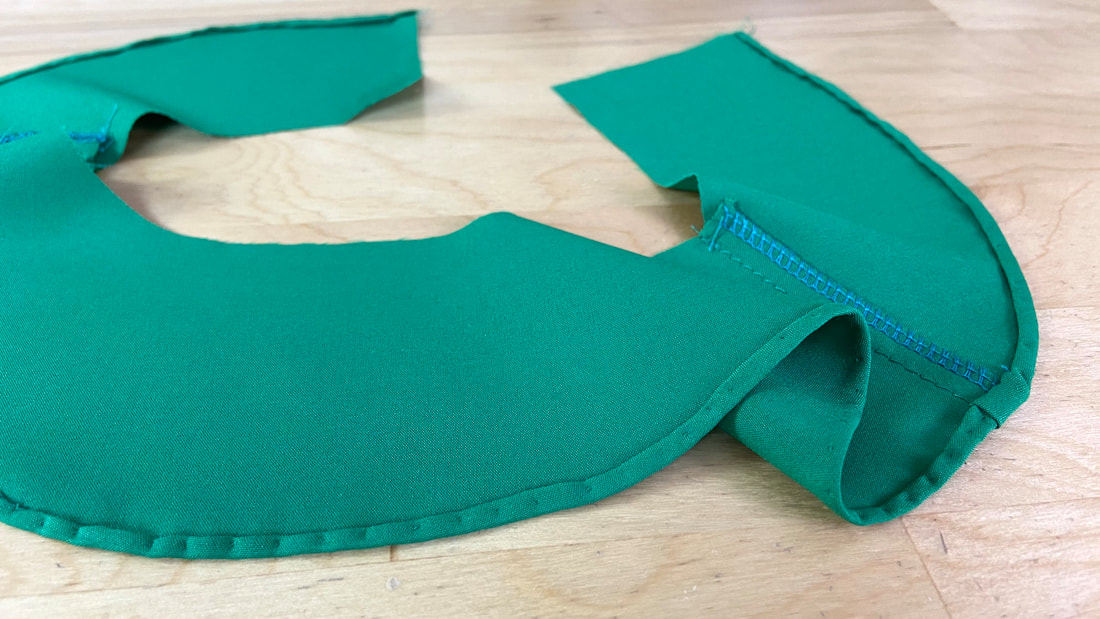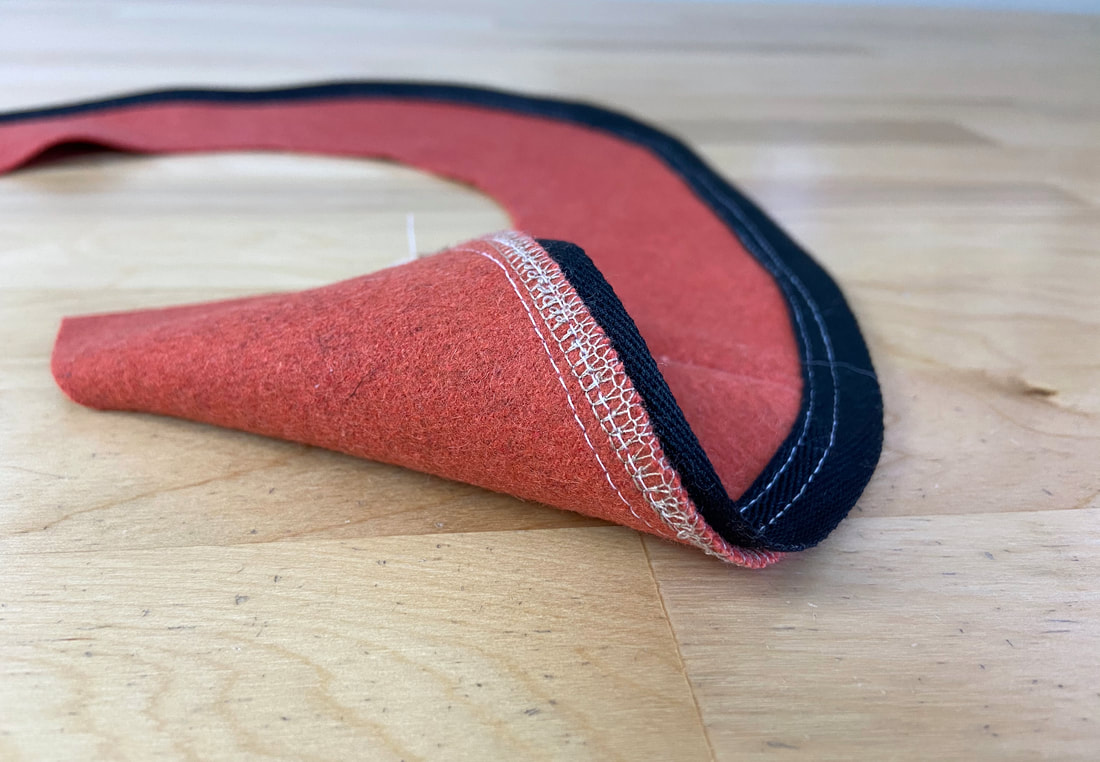6 Ways To Clean-Finish Facing Outer Edges
Shaped facings are used to finish garment raw edges by enclosing them with a facing compartment. This facing compartment is usually cut from the same fabric as the garment.
While the facing's inner edge is sewn to the garment's raw edge, the facing's outer edge is left exposed on the garment's wrong side and thus should be clean-finished to prevent it from fraying. Conventionally, this outer edge is either enclosed with lining, if the garment is fully lined, or finished individually using the technique most suitable for the garment and fabric at hand.
Keep in mind that it is easiest to finish the facing's outer edge before the facing unit is fully stitched to the garment.
Here are 6 techniques you can use to clean-finish a facing's outer edge:
While the facing's inner edge is sewn to the garment's raw edge, the facing's outer edge is left exposed on the garment's wrong side and thus should be clean-finished to prevent it from fraying. Conventionally, this outer edge is either enclosed with lining, if the garment is fully lined, or finished individually using the technique most suitable for the garment and fabric at hand.
Keep in mind that it is easiest to finish the facing's outer edge before the facing unit is fully stitched to the garment.
Here are 6 techniques you can use to clean-finish a facing's outer edge:
Overedge stitching like serging or zigzag: This is the simplest, fastest and most readily available technique you can use to clean-finish facing edges. Overedge stitches can be applied by hand or by machine, and their primary role is to encase fabric raw edges thus preventing them from fraying throughout the garment's life cycle.
Once the facing compartment has been stitched and its individual seams ironed flat, a serging stitch (if you have an overlock sewing machine) or a zigzag stitch on your home sewing machine, is applied along the entire outer edge of the facing compartment. If your fabric frays heavily, use a denser stitch application.
Once the facing compartment has been stitched and its individual seams ironed flat, a serging stitch (if you have an overlock sewing machine) or a zigzag stitch on your home sewing machine, is applied along the entire outer edge of the facing compartment. If your fabric frays heavily, use a denser stitch application.
A folded-and-topstitched finish provides a cleaner, more professional application than a regular serged edge. If the fabric does not fray, the facing's outer edge is simply folded at approximately 1/4" toward the fabric's wrong side, pressed (to crease the folded edge), and topstitched to complete.
Note: Since most fabrics tend to fray when cut, it is good practice to apply an overedge stitch along the facing's raw edge prior to folding and topstitching it.
Note: Since most fabrics tend to fray when cut, it is good practice to apply an overedge stitch along the facing's raw edge prior to folding and topstitching it.
A hong kong finish is applied using a bias fabric strip. The bias strip is stitched to the facing edge similar to a single layer biding. However, when the strip is folded under to encase the facing's raw edge, it is left flat instead of being folded the way a conventional binding strip is.
On the application's right side, the finish looks identical to a bias bound finish. If you flip the facing layer on its wrong side, the bias strip's raw edge is left exposed. It is crucial to cut the fabric strip on the bias so that it has enough flexibility to mold along the facing's curved edge.
A hong kong edge finish is used with more tailored, structured items that are often heavier (such as jackets and coats). In addition, this unique technique provides a semi-decorative finish, especially when a contrast bias fabric strip is used.
On the application's right side, the finish looks identical to a bias bound finish. If you flip the facing layer on its wrong side, the bias strip's raw edge is left exposed. It is crucial to cut the fabric strip on the bias so that it has enough flexibility to mold along the facing's curved edge.
A hong kong edge finish is used with more tailored, structured items that are often heavier (such as jackets and coats). In addition, this unique technique provides a semi-decorative finish, especially when a contrast bias fabric strip is used.
A bias bound finish is a classic edge finishing technique that is completed using pre-cut and often, pre-folded bias binding. The binding strip encases the facing's raw edge, and is folded in on both sides of the application for a clean, professional finish on both the right and wrong side of the facing layer.
Bias binding can be cut at home or store bought in pre-packed form. It is conveniently available in a few different styles including single layer, double layer, and pre-folded.
Bias binding can be cut at home or store bought in pre-packed form. It is conveniently available in a few different styles including single layer, double layer, and pre-folded.
A rolled edge finish is a technique commonly applied by hand although it can also be completed by machine using a special hemming presser foot.
As the name suggests, a rolled hem application results in a very narrow finish which encases the fabric's raw edge within a double fold. The finished fold is often no more than 1/8" in width. Although not as commonly used, a rolled edge finish is most compatible with light, silk fabrics that are difficult to machine stitch.
As the name suggests, a rolled hem application results in a very narrow finish which encases the fabric's raw edge within a double fold. The finished fold is often no more than 1/8" in width. Although not as commonly used, a rolled edge finish is most compatible with light, silk fabrics that are difficult to machine stitch.
Twill tape is used as a semi-decorative facing edge finish. Instead of fully encasing the facing's raw edge, the twill tape simply hides it underneath.
The strip of twill tape is aligned to fully cover the facing edge and stitched from the facing's right side. If the fabric frays when cut, use an overedge stitch like serging or zigzag to encase the facing's raw edge prior to aligning and stitching the twill tape.
The strip of twill tape is aligned to fully cover the facing edge and stitched from the facing's right side. If the fabric frays when cut, use an overedge stitch like serging or zigzag to encase the facing's raw edge prior to aligning and stitching the twill tape.

